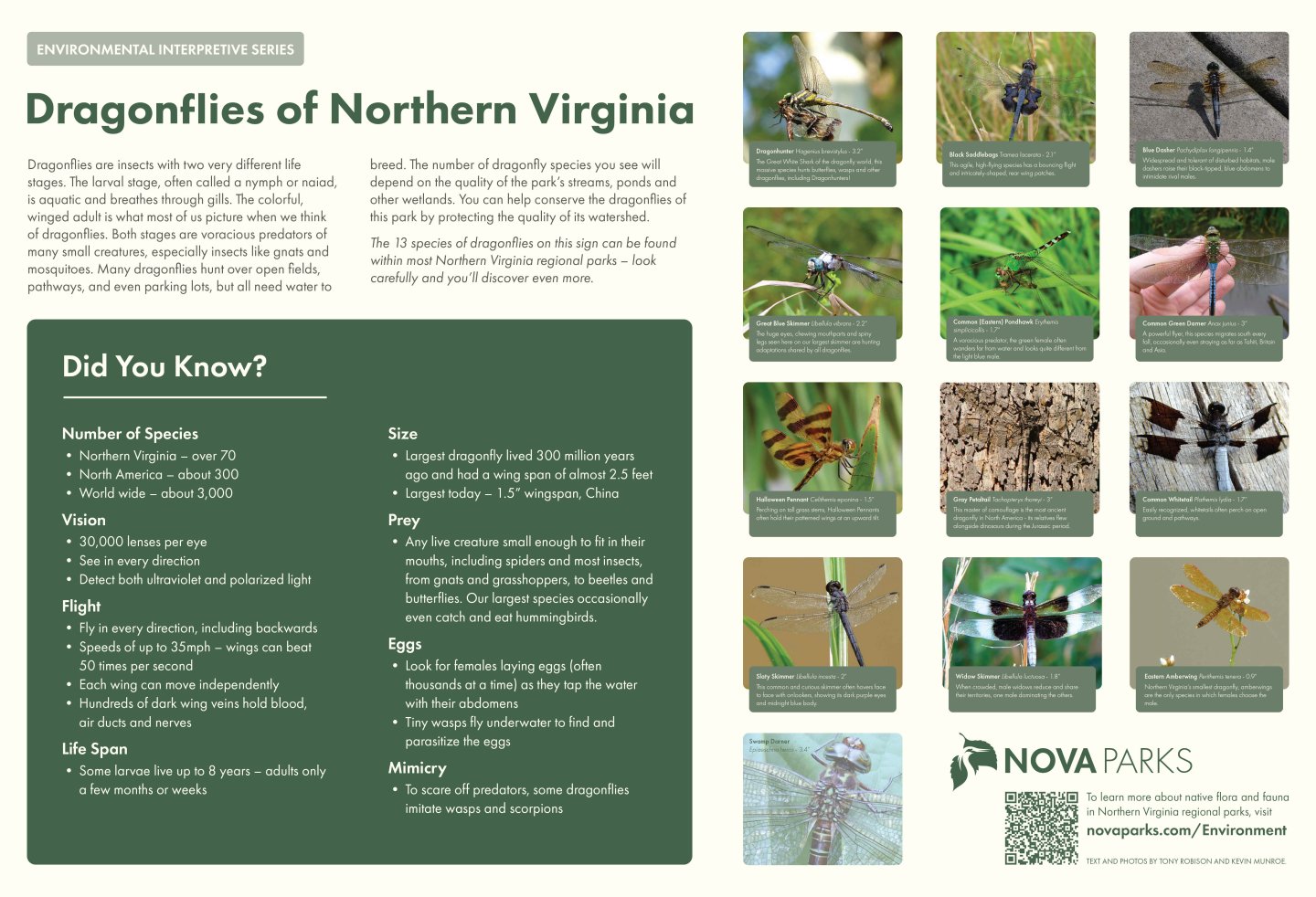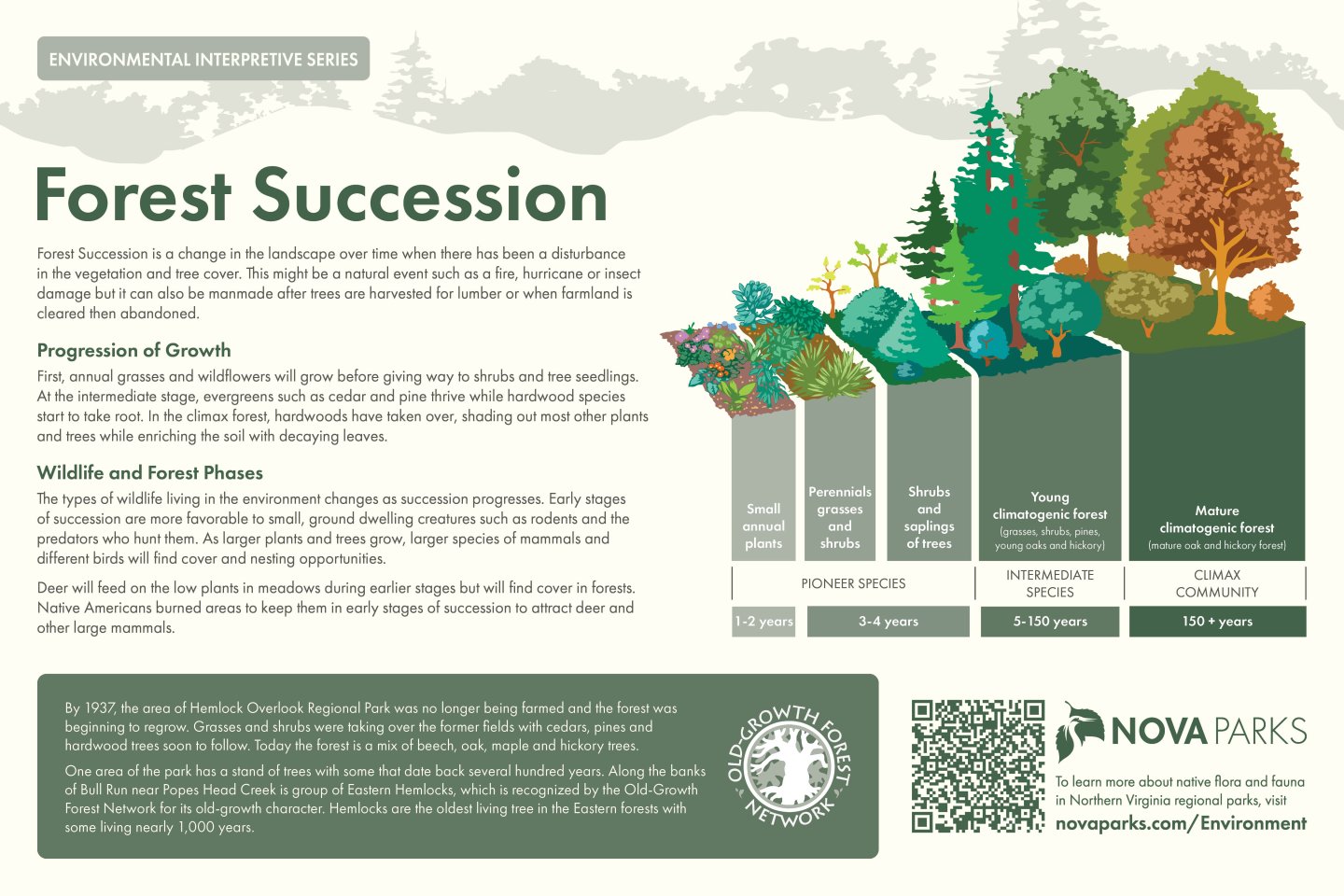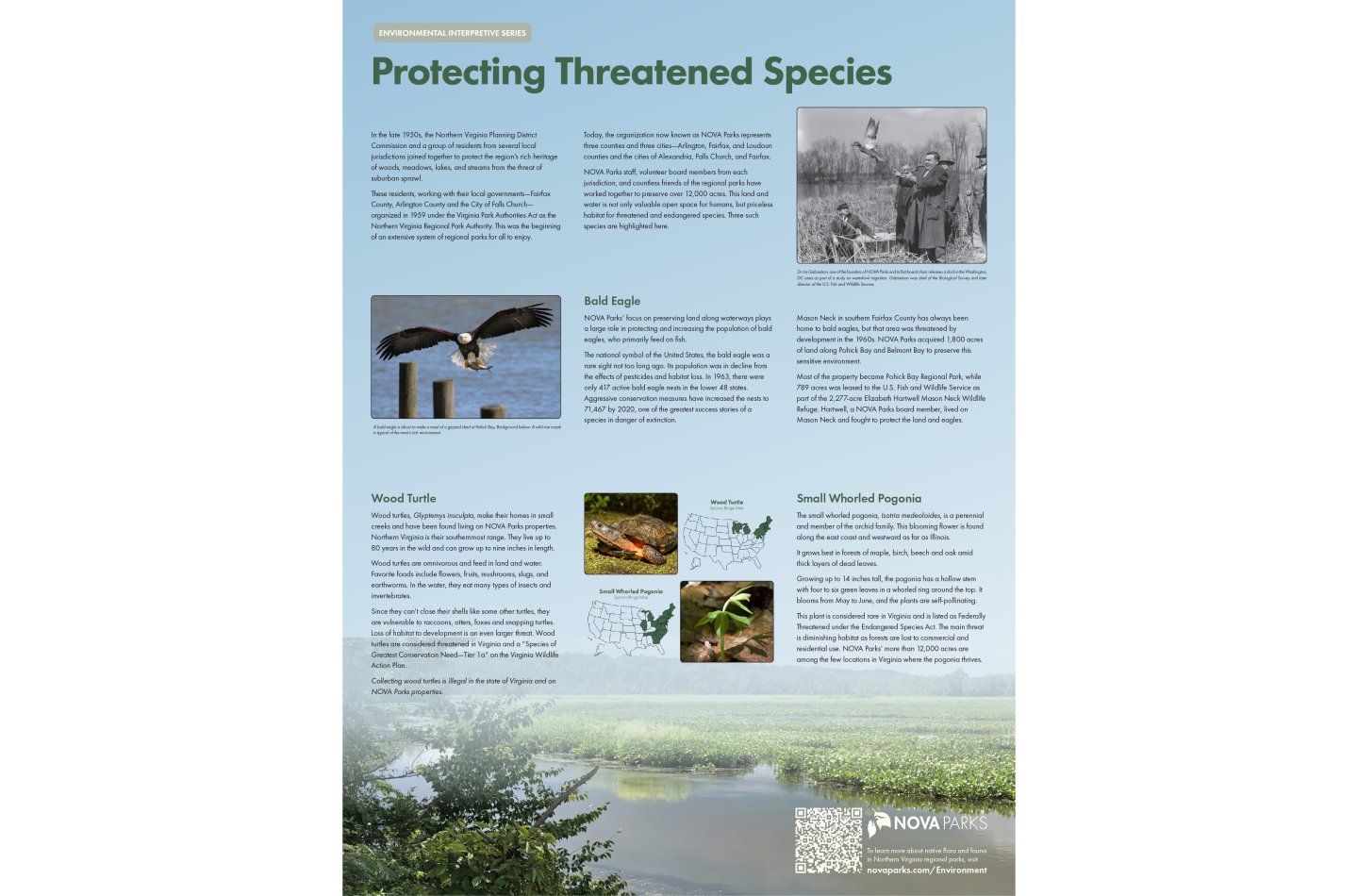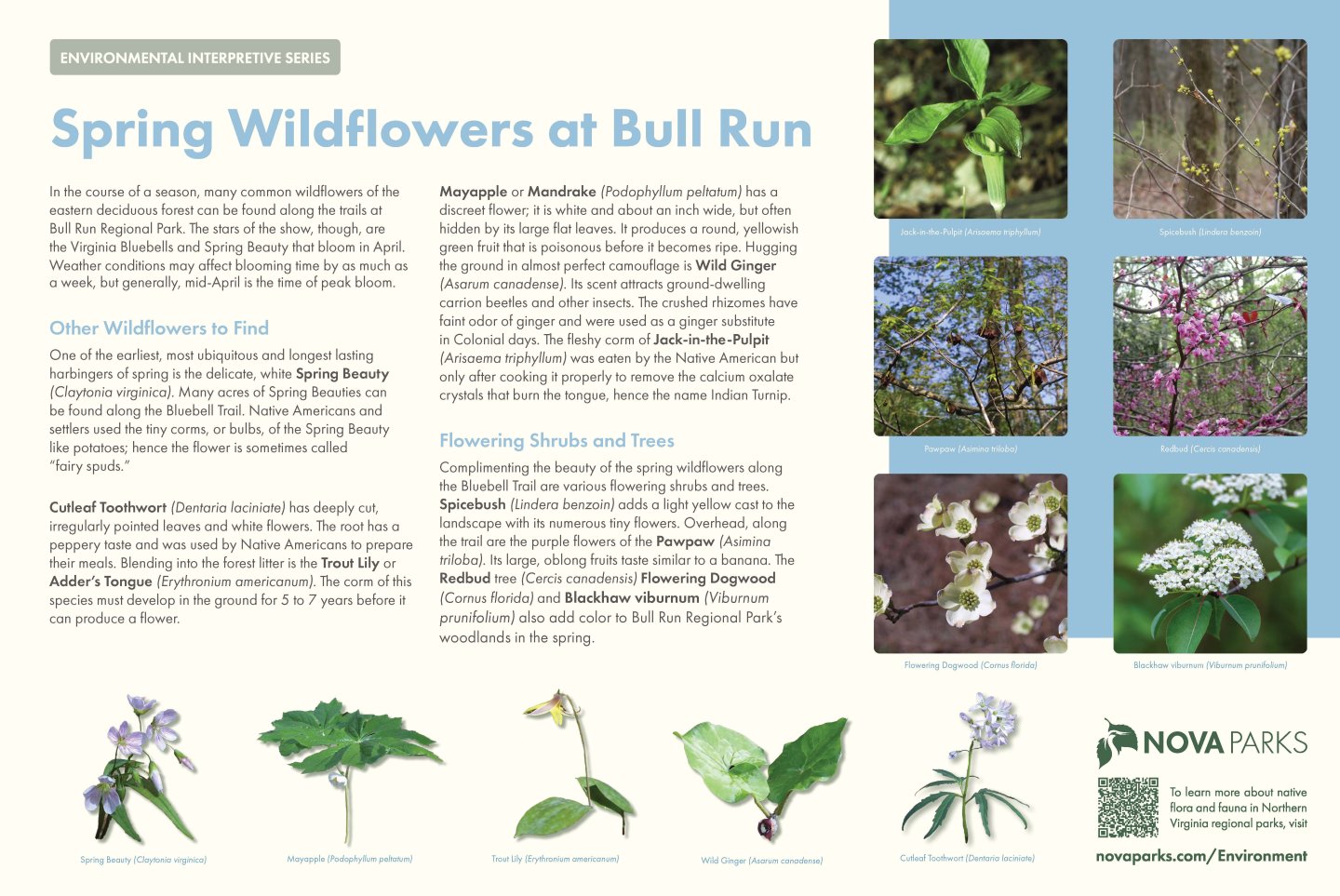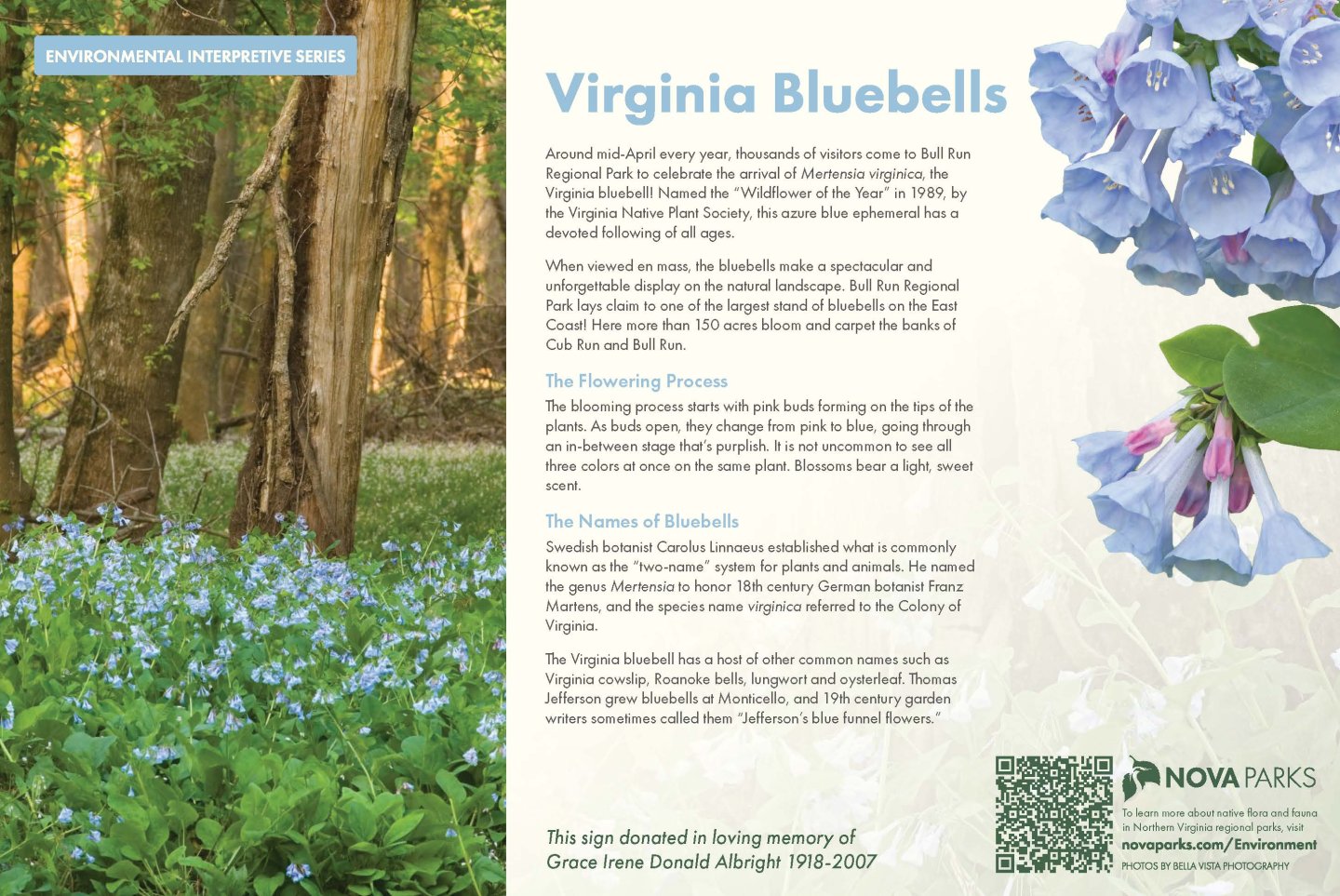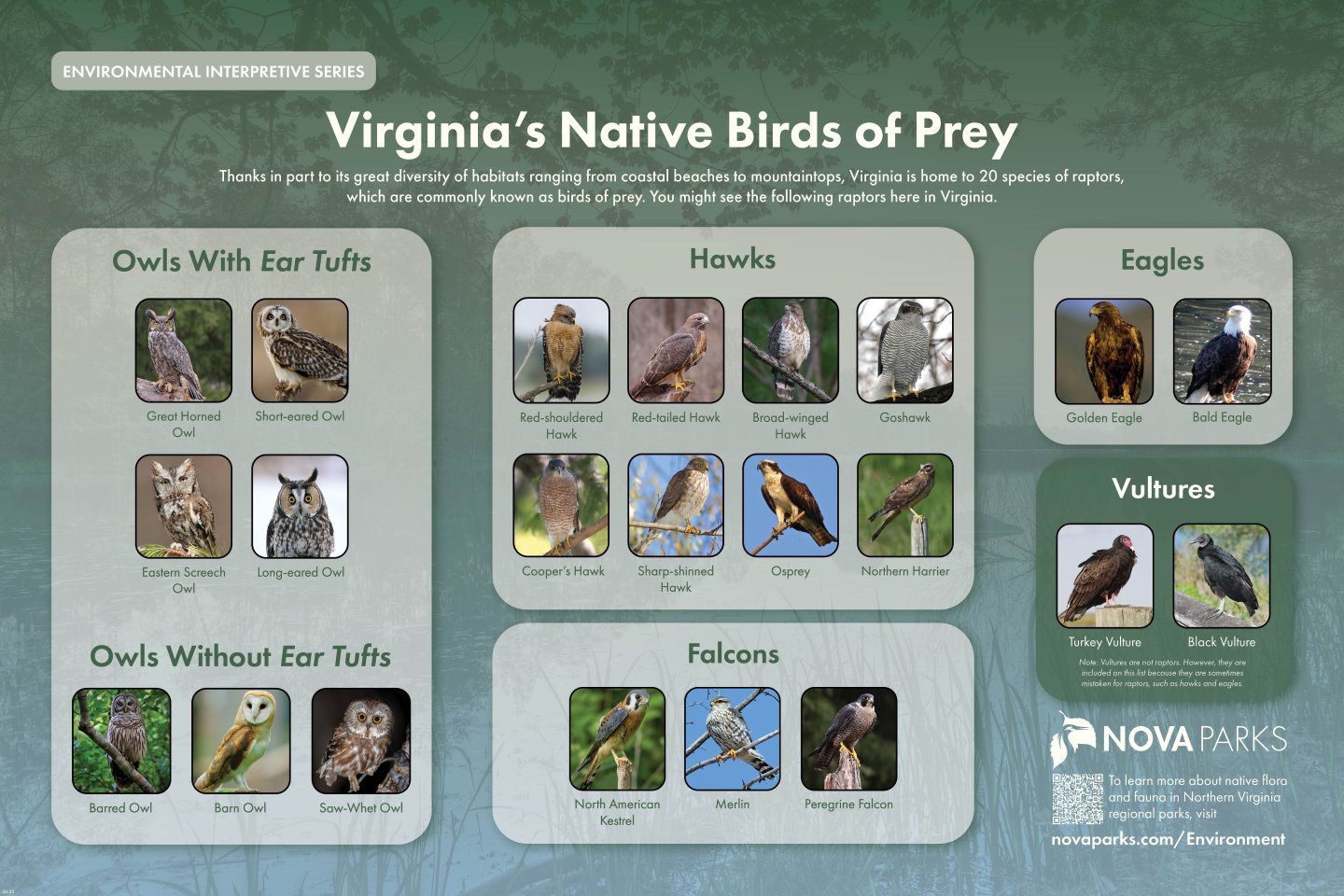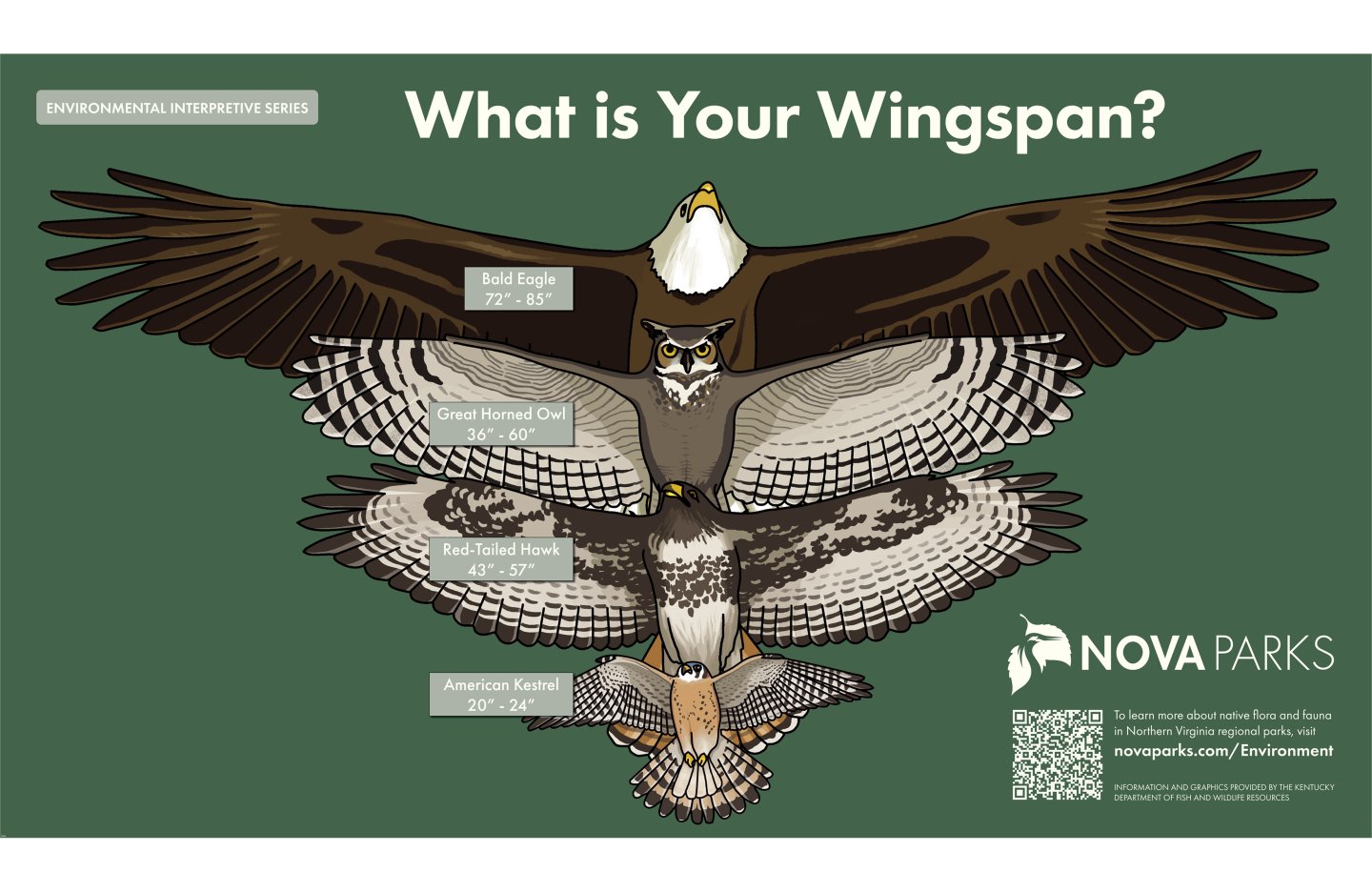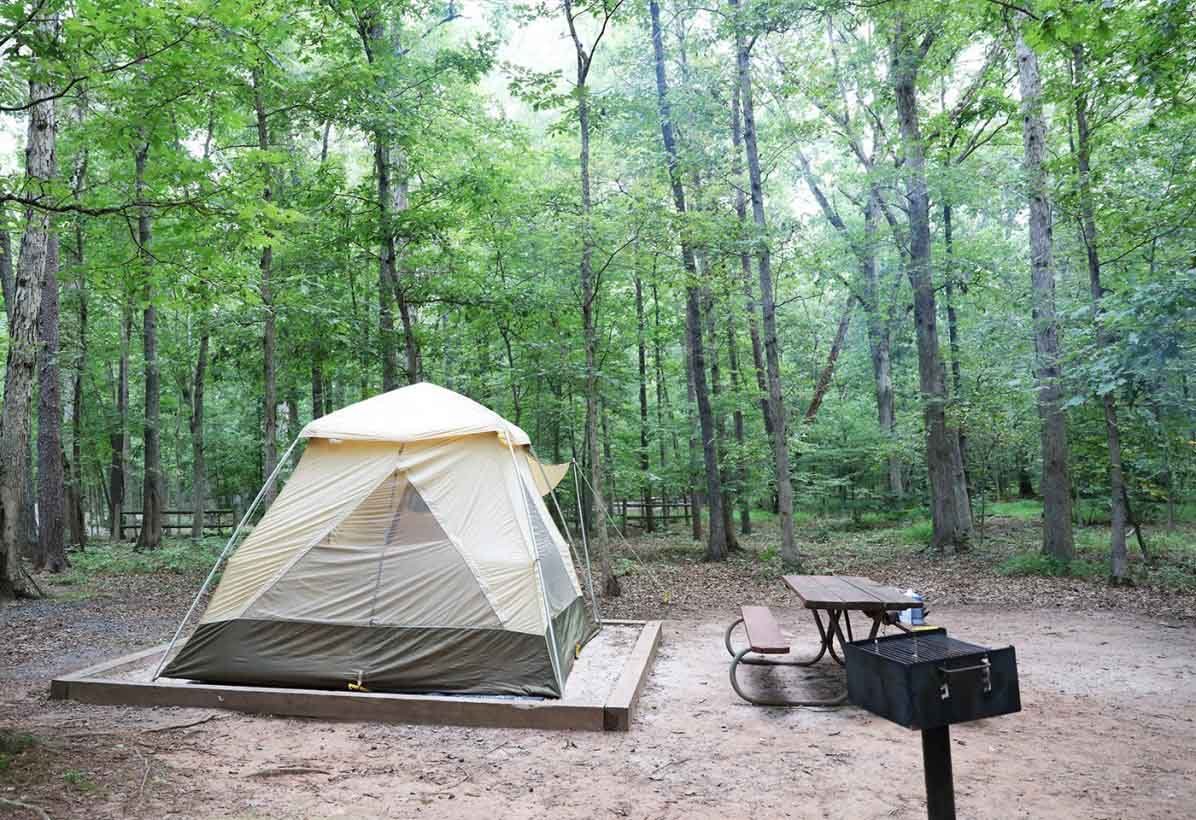Environmental Interpretive Series
Environmental Interpretive Series: Dragonflies of Northern Virginia
Dragonflies are insects with two very different life stages. The larval stage, often called a nymph or naiad, is aquatic and breathes through gills. The colorful, winged adult is what most of us picture when we think of dragonflies. Both stages are voracious predators of many small creatures, especially insects like gnats and mosquitoes. Many dragonflies hunt over open fields, pathways, and even parking lots, but all need water to breed. The number of dragonfly species you see will depend on the quality of the park’s streams, ponds and other wetlands. You can help conserve the dragonflies of this park by protecting the quality of its watershed.
Environmental Interpretive Series: Forest Succession
Forest Succession
Forest Succession is a change in the landscape over time when there has been a disturbance in the vegetation and tree cover. This might be a natural event such as a fire, hurricane or insect damage but it can also be manmade after trees are harvested for lumber or when farmland is cleared then abandoned.
Environmental Interpretive Series: Protecting Threatened Species
In the late 1950s, the Northern Virginia Planning District Commission and a group of residents from several local jurisdictions joined together to protect the region’s rich heritage of woods, meadows, lakes, and streams from the threat of suburban sprawl.
These residents, working with their local governments—Fairfax County, Arlington County and the City of Falls Church—organized in 1959 under the Virginia Park Authorities Act as the Northern Virginia Regional Park Authority. This was the beginning of an extensive system of regional parks for all to enjoy.
Environmental Interpretive Series: Spring Wildflowers at Bull Run
In the course of a season, many common wildflowers of the eastern deciduous forest can be found along the trails at Bull Run Regional Park. The stars of the show, though, are the Virginia Bluebells and Spring Beauty that bloom in April.
Weather conditions may affect blooming time by as much as a week, but generally, mid-April is the time of peak bloom.
Environmental Interpretive Series: Virginia Bluebells
Around mid-April every year, thousands of visitors come to Bull Run Regional Park to celebrate the arrival of Mertensia virginica, the Virginia bluebell! Named the “Wildflower of the Year” in 1989, by the Virginia Native Plant Society, this azure blue ephemeral has a devoted following of all ages.
Environmental Interpretive Series: Virginia's Native Birds of Prey
Thanks in part to its great diversity of habitats ranging from coastal beaches to mountaintops, Virginia is home to 20 species of raptors, which are commonly known as birds of prey.
Environmental Interpretive Series: What's Your Wingspan
How does your wingspan stack up to other feathered friends?
